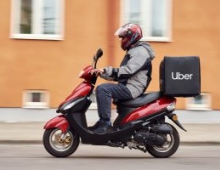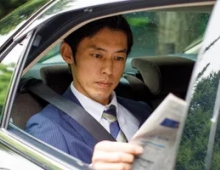
Uber's Self-driving Recognized Pedestrian Late and Failed to Brake: NTSB
An Uber self-driving vehicle that struck and killed a woman in Arizona in March failed to brake and recognized the woman late, according to a preliminary report issued by the U.S. National Transportation Safety Board.
Uber's modified 2017 Volvo XC90, occupied by one vehicle operator and operating with a self-driving system in computer control mode, struck a pedestrian March 18, 2018. The pedestrian suffered fatal injuries, the vehicle operator was not injured.
According to the NTSB's preliminary report, the pedestrian, pushing a was pushing a bicycle, crossed the road in a section not directly illuminated by lighting. The report also notes the pedestrian's post-accident toxicology test results were positive for methamphetamine and marijuana.
In its report the NTSB said Uber equipped the test vehicle with a developmental, self-driving system, consisting of forward- and side-facing cameras, radars, Light Detection and Ranging, navigation sensors and a computing and data storage unit integrated into the vehicle. The vehicle was factory equipped with several advanced driver assistance functions by the original manufacturer Volvo Cars, including a collision avoidance function with automatic emergency braking as well as functions for detecting driver alertness and road sign information. The Volvo functions are disabled only when the test vehicle is operated in computer control mode.
The report states data obtained from the self-driving system shows the system first registered radar and LIDAR observations of the pedestrian about six seconds before impact, when the vehicle was traveling 43 mph. As the vehicle and pedestrian paths converged, the self-driving system software classified the pedestrian as an unknown object, as a vehicle, and then as a bicycle with varying expectations of future travel path. At 1.3 seconds before impact, the self-driving system determined that emergency braking was needed to mitigate a collision. According to Uber emergency braking maneuvers are not enabled while the vehicle is under computer control to reduce the potential for erratic vehicle behavior. The vehicle operator is relied on to intervene and take action. The system is not designed to alert the operator.
In the report the NTSB said the self-driving system data showed the vehicle operator engaged the steering wheel less than a second before impact and began braking less than a second after impact. The vehicle operator said in an NTSB interview that she had been monitoring the self-driving interface and that while her personal and business phones were in the vehicle neither were in use until after the crash.
All aspects of the self-driving system were operating normally at the time of the crash, and there were no faults or diagnostic messages.
The report is obviously a serious hit in the reliability of Uber's self-driving platform. The company The company did not directly comment on the NTSB findings but noted that it recently named a former NTSB chairman, Christopher Hart, to advise on Uber's safety culture.
The ride-hailing company aims to resume self-driving operations this summer, likely with smaller routes and fewer cars, the company said on Wednesday.





















